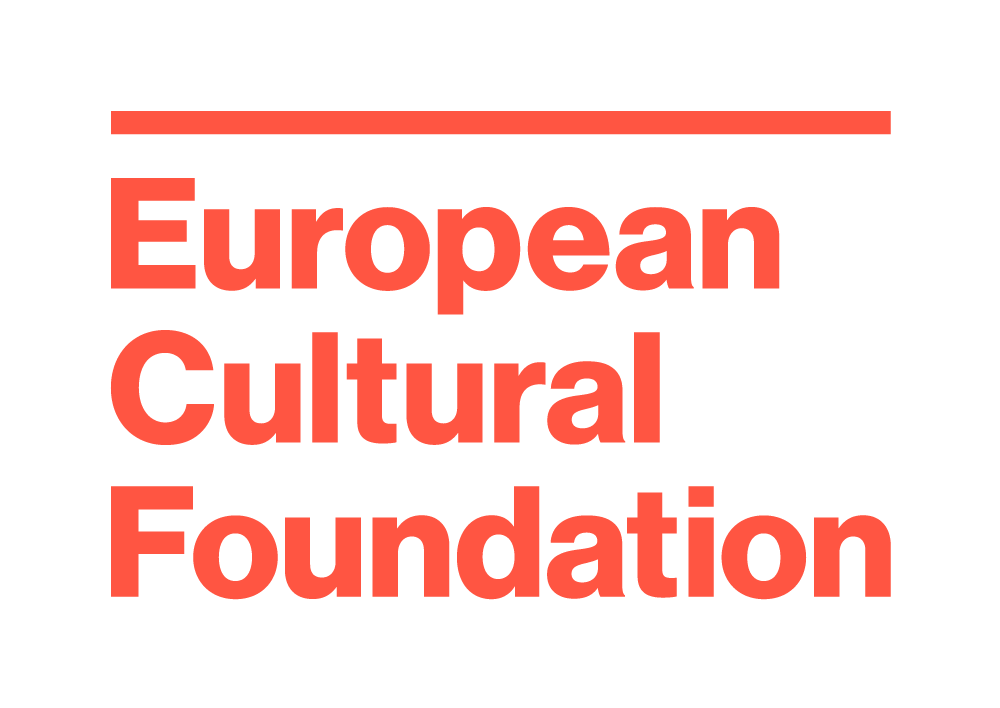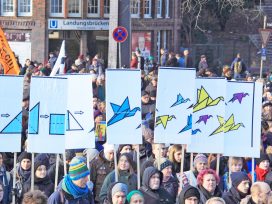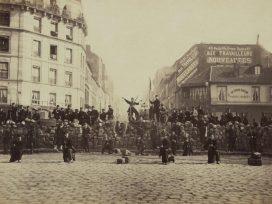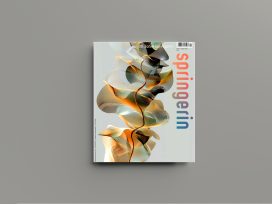In the wake of the US presidential election, the severity of the crisis facing liberal representative democracy is clear. The need for a civil domain has never been greater, argues sociologist Pascal Gielen. What options are left to creatives still prepared to imagine a better world?
Today, a growing number of artists and other creatives are moving in the direction of commitment again. At biennales we see more than just flirts with radical political theory: more and more of the artistically inclined are actually rolling up their sleeves, and even getting their hands dirty in building community projects, in righting postcolonial wrongs, or at least challenging neoliberal politics. In addition, artistic projects undauntedly explore the boundaries between art and education. This happens primarily when art attempts to inform the civil debate. It is precisely then that artists seem to be slightly better equipped than their teaching colleagues.
Can art really be constitutive of civil space? Can it really enhance the role of education in this respect, maybe even compensate for it? In short, what is the educational value of art in the civil domain?
In order to carefully answer these questions, we have to make a detour, as there is much confusion about the concept of civil space. In any case, it seems advisable to clearly define terms before digging into the question of what art can do in the civil domain.
Civic places and civil space
It is in the gulf between legality and illegality, between creativity and criminality that civil space sees the light of day. In the grey area between what is allowed and what is not, or not yet, allowed, civilians initiate that which governments and states have yet to think of (or do not want to think of), and in which no market has any interest. For the record: civil action does not coincide with criminal behaviour. Civil actions simply concern non-regulated domains, areas not yet covered by any specific law. For instance, a civil action may denounce the fact that something is not, or not sufficiently, regulated by law; or it may develop a practice for which there simply is no regulation, or at least no good one. Whether the actions involved are lawful or not remains to be seen. It is then up to public opinion to judge the claim or action on its legal, but also moral and ethical merits. However, within a democracy, at the end of the day it is the legislative and judicial powers that decide whether to categorize the issue at hand as legal or illegal. At the moment of the actual civil action itself, this remains undecided: will this practice be tolerated, embraced, or even pass into law, or not? Or is it more likely to be criminalized? Civilians who take a stand, who invoke their civil rights, are in other words still uncertain about where they will end up, how they will be judged. They simply do not know if these rights will be assigned to them. This is why a civil action is always a risky undertaking in which one sticks one’s neck out and risks one’s own social position.
Because of the undecided nature of the space in which civil action takes place, it seems wise to distinguish between the terms “civil” and “civic”. Although both concepts are often used interchangeably in everyday usage and in the media, “civic” mainly refers to government, which has “civic tasks” or distributes these well-defined civic tasks to persons or delegates them to other places and institutions. In other words, civic places are already regulated (by law or otherwise) whereas civil space remains open. Or, to paraphrase Michel de Certeau’s analytical distinction between place and space: civic places are established through or have taken root in policies, education programmes, regulations or laws. By contrast, civil space, in the Certeausian sense, remains fluid; a space where positions still have to be taken up or created (Certeau, 1980).
Governments or authorities who wish to regulate civil space by, for example, safeguarding a public space or by implementing lessons in democracy and public spirit in school curriculums, are pushing civil space into a civic places. Likewise, the civil movement that demands a better legal framework for a certain issue is paradoxically promoting the elimination of its own reason for existence. It is no coincidence that civil movements often evaporate once their goal has been reached. The movement comes to a standstill as it becomes rooted in a civil law or civic rule.
The reason for both true civil action and civil space finding themselves in between illegality and legality is perhaps better understood by looking at the problem of – modern or (post-)revolutionary – politics. As Hannah Arendt states in On Revolution: “… those who get together to constitute a new government are themselves unconstitutional, that is, they have no authority to do what they have set out to achieve. The vicious circle in legislating is present not in ordinary lawmaking, but in laying down the fundamental law, the law of the land or the constitution which, from then on, is supposed to incarnate the ‘higher law’ from which all laws ultimately derive their authority.” (Arendt, 183-84, 1990).
So, the constitutive power and the constitutive body are always outside of the constitution, since they precede it. They are therefore neither legal nor illegal, which immediately presents the problem of authority within modern democracies: for whom is it acceptable, that they place themselves outside, or rather above, the law, precisely in order to establish that law? Civil space relates to civic places in a similarly ambivalent manner. The former precedes the latter, running the risk of never being (lawfully) recognized or legalized, and thus of remaining permanently in the sphere of illegality.
This curious aspect of civil space also has a historical reason, as again Arendt demonstrates. In the last chapter of the same book, she writes of “a treasure” that was lost in both the American, French and Russian revolutions. She is referring to the rural communities on the new continent, but even more to the Paris Commune and the spontaneous self-organization of, for example, Russian workers in soviets. Remarkably, “the men of the revolution”, as Arendt calls them, didn’t really know what to do with the murmurings of this all too colourful multitude. Nevertheless it was perhaps the same multitude that took the revolutionary idea most to heart. As we know, the Versailles troops rather brutally swept the communes aside, while Vladimir Lenin, although paying lip service to the soviets in founding the Soviet Union, in fact opted for the secure path of the one-party system. Arendt’s analysis therefore shows that revolutions could in fact have followed two diverging historical routes. One, that of party politics (sometimes via a stop-over at enlightened despotism), which for various modern forms of administration ended up in liberal representative democracy; or, two, that of a local, bottom-up initiative of many varied forms of self-governance. Although the latter path also paved the way for democracy – perhaps a more radical democracy than most of us know today – (revolutionary) history has mainly ignored this option. That is why Arendt speaks of “a lost treasure”. However, following her insights further, we could say that civil initiatives and civil movements have actually filled this void. They move in the direction of self-governance that political history might have taken during and after revolutions, picking up where the Paris Commune and the soviets left off. And, as mentioned earlier, they take the same risks as their predecessors. They are still in danger of being shoved aside or being criminalized, violently or otherwise.
Civil and public space
Before going deeper into the relationship between civil space, art and education, there is another distinction that should be made clear. Like the advocated difference between “civic” and “civil”, this concerns terms that are best kept apart rather than allowing them to coincide, as so often happens in everyday usage in this case too. Here too though, a distinction, or at least a strong nuance, may be productive. Civil space often requires collective actions, initiatives and organizations. People have to make an effort, organize something or simply “do” something in order to shape civil space. By contrast, public space is the space we can enter freely, that is or should be accessible to anyone. Or, following Jürgen Habermas, the space of public opinion where people can freely make their more or less idiosyncratic voice heard, preferably along with good arguments, like in the media, in public debate or in time-honoured salon conversations (Habermas, 1989). We can articulate the relationship between these concepts as follows: whereas public space is a space for the free exchange of thoughts, opinions and ideas among people, the civil domain provides the framework for organizing these thoughts, opinions, ideas and people. Within the latter space, a thought, opinion or idea is expressed in a public action or in the form of an organization. In other words, civil space needs the public domain. After all, the latter constitutes the utterly vital source of inspiration for the former. Public space provides a site, as it were, for both new ideas and new people (new citizens) but they can only claim and obtain their place in society through self-organization in the civil domain. Vice versa, this also implies that public space is reliant on civil space, as the latter makes the public domain possible by organizing it or claiming a place for it; for example by enforcing freedom of speech by legal means, but also by founding organizations and institutions such as newspapers or other platforms, for that purpose. Simply put, public space is all about the free word, while in the civil domain it is action takes centre stage. The interaction between both constitutes the famous praxis, where actions are suited to words, but also where actions can and may be put into words. It is precisely at this intersection between actions and words that both education and art can play a significant role.
Lessons in democracy
One of the most remarkable conclusions drawn by educator Gert Biesta in his publication Learning Democracy in School and Society, is that we cannot be taught democracy and public spirit. No matter how many lectures in democracy and active citizenship a student attends, if the educational institute itself is not organized in a democratic way, this student will have great difficulty internalizing and realizing whatever fine ideals and insights about democratic governance he or she has learned by heart. Only if we are raised democratically and encouraged to act democratically from day one, will we be able to bring rules of democracy into practice ourselves. Biesta:
The desire for democracy does not operate at the level of cognition and therefore is not something that can simply be taught. The desire for democracy can, in a sense, only be fuelled. This is the reason why the most significant forms of civic learning are likely to take place through the processes and practices that make up the everyday lives of children, young people and adults and why the conditions that shape these processes and practices deserve our fullest attention if we really are concerned about the future of democratic citizenship and about the opportunities for democratic learning in school and society. (Biesta, 2011: 97-98).
The distinction made earlier between words and actions seems relevant here too. Democracy, Biesta seems to say, is a matter of praxis. Perhaps the same can be assumed to apply to civil behaviour. Theoretical lectures on civil spirit, Bildung, civil responsibility, and so on, can only make themselves felt if the civil space is actually experienced, if it is learned while actively engaging with it. If such opportunities are not afforded, people will remain at the level of the public sphere. Of course, one can raise one’s voice there or even debate more sophisticatedly by applying good arguments, as in Habermas’s nineteenth-century coffee houses and tea parlours, but that does not internalize civil behaviour.
The point is that nowadays schools and universities have great difficulty in organizing democracy and civil space. Pressure to perform, competencies to check off and strict contact hours leave little room for democratic organization and decision-making. Especially the latter can require much patience as it can take up a lot of time for debate – which can be annoying – because everyone needs to have their say. It is especially the unpredictable duration of such processes that the present-day (post-Bologna) educational structure is having trouble with. Within a regime of strict schedules and fixed end qualifications all time is measured precisely, after all. Within school hours there is hardly any “flexible” time, although democratic consultation and organization desperately need the space of as yet unspecified time, or “holes” in time. The same can be said to apply to civil space. The fear of claims, panic over potential insurance costs, copyright and, last but not least, a hired external security company, leave very little room for a grey area between legality and illegality inside the walls of educational institutes. Almost everything has to be regulated and insured nowadays. The traditional school director had to make way for professional (micro-)management that knows how to squeeze every last bit of profit from contact hours and classroom use, i.e. calculating and quantifying everything. That is why this contemporary school regime has also been referred to as a “catering regime”: just as with school meals, education and educational space are now neatly apportioned. The fear of negative audits and withdrawal of accreditations do the rest.
A spontaneous field trip because it’s a sunny day or there just happens to be an exhibition this month that will be over by the time all the paperwork is done; a building that remains accessible to students outside school hours; an unspecified class or having a beer with one of the teachers; all of these things are becoming increasingly impossible to do. Still, it is precisely in this informal or unregulated time and space that exercises in civil behaviour can occur. Exactly at those moments when things are not compulsory, but perhaps also strictly speaking not allowed either, civil space may emerge. It is only there that spontaneous initiatives can originate and only there that independent decisions to take responsibility, to take control, can be made. Any government that wishes to encourage civil spirit and civil initiative should actually break open its own schools. Compulsory lessons in democracy and citizenship can at best inspire students, but true democratic behaviour and taking social responsibility can only occur in the gap that a governing body or government leaves open, in the open space where governments… do not govern.
Art and civil education
For the time being it doesn’t look like governments are going to allow schools and universities more civil breathing space. In Europe anyway, current education policies suggest just the opposite. Still, it looks like civil initiatives have found an escape route to extracurricular domains. Just as intellectuals with broad interests are banned from universities – and systematically replaced by career academics neatly checking off their academic publications – we see the breeding ground for debate and civil action dry out within the educational space. Together with the said intellectuals, this civil praxis now seems to have found a new home in the art world. Those who have been scouring biennales and arts festivals over the past decade have been treated to a veritable feast of political discussions and social debates. Sometimes art is hardly the topic anymore, but rather globalism, neoliberalism, precarity, “communism”, or ecology, to name but a few. However, this discourse is mostly limited to the discursive space, which in addition hardly moves beyond the borders of the parish of the already converted. In short, the debate is limited to the level of the, often quite limited, public domain. Words and actions are often still very far apart here, which means that true civil initiatives do not materialize. However, this takes nothing away from the fact that the professional art world is increasingly taking the role of civil education upon itself. The time-space that is skimped on in education seems to be shifting to biennales, museums and theatres. If we add to that the thinning of the (democratic) debate, the cutbacks in investigative journalism and the commodification of the writing and speaking space in mainstream media, we may perhaps conclude that cultural institutions are among the few remaining places of refuge for lessons in democracy.
And there is more than just lessons, or room for debate. Space itself is being experimented with. For example, discussions may take place in a setting that looks like the British Parliament, and we only need to think of the artistic projects of Jonas Staal to see how more and more thought goes into the shape or architecture for civil actions (and I don’t mean that Staal is only concerned with form, but only that form is a substantial element in his work). While this literally physical space within education is being heavily formalized and “formatized” by strict schedules and budgets, the artistic domain offers the opportunity to experiment with the form of public debate. Admittedly, sometimes it is just about building aesthetic façades or backdrops, but more and more artists are also deliberately experimenting with the setting of the public space. This not only allows for lessons about democracy and citizenship, but also for lessons in democracy and citizenship, because through such experiments with form, participants can personally experience what it feels like to be democratically positioned or not. And, as we have learned from Biesta, it is only through this experience that the desire for democracy “can be fuelled”. It is the first step in taking us closer to the praxis described earlier, especially the need to not just learn about civil behaviour but to experience it personally. Not just the content of the lesson, but the form and setting in which this content is communicated co-determine the likelihood of it being internalized. This at once clarifies how the artistic can contribute something specific to traditional lessons in citizenship or democracy. Precisely because the artistic does not focus exclusively on content but also on form, it co-defines the conditions of a civil process. But that is not all there is to say about the potential of art for civil education.

The sculpture Obelisk and Third Paradisio by Michelangelo Pistoletto, 2013. The huge three-looped infinity sign is an artistic gesture aimed at showing politicians and society the follies of excess that led to the financial crisis. Photo: Yann Caradec Source: Flickr
Once “the end of history” (Fukuyama, 1992) was declared, the end of ideological differences was advocated too, which meant de facto the end of democracy; soon thereafter, the idea of utopia as a possible political project was buried as well. The intellectual and especially academic/scientific taboo concerning utopian thinking destroys the liveliness of the political and the civil space, especially that of the social imagination. The current dominance of “realism” and pragmatism in politics as well as in philosophy deprives politics of chances for developing a long-term vision. Nowadays, any visionary project with an eye on an ideal society invariably runs aground upon the Realpolitik of budgetary policies. Politics has become policy, and governing a matter of bookkeeping. This corners the imagination, or rather: sends it into exile to the exclusive domain of fiction. Only within the walls of the cinema, the theatre, the museum or in the pages of a novel is there still room to dream of a different world. There, one can still freely speculate about a possible future society.
Perhaps the boom in fantasy and science fiction movies in popular culture need therefore not surprise us. The first genre is a rosy escape from reality, while in the second genre utopia becomes dystopia. Both genres have in common that they create an image of a truly post-political society at the end of history. Whereas in fantasy movies all power relations have been depoliticized – as they are dissolved in supernatural and magical, but also highly moral decisions about good and evil – the world of science fiction tends to present us with societies that are at the mercy of terror, totalitarian regimes, dehumanized camp-like situations controlled by machines, or natural disasters of apocalyptic proportions. Convincing stories about different, utopian worlds are however few and far between. Our future is either transcendental or catastrophic. This popular field of the imaginary doesn’t seem to offer many other flavours. The contrast with the boom in political and social commitment in that other segment of the imaginary domain of fiction could hardly be sharper. From the heterotopic project of Michelangelo Pistoletto to the activist architecture of Recetas Urbanas, from the political art of Jonas Staal and Oliver Ressler to the economic, postcolonial interventions by Renzo Martens or the highly critically engaged work of Els Dietvorst, Sara Vanhee or Jeanne van Heeswijk, or the utopian but also highly concrete gestures of Thomas Hirschhorn – they are all concerned with imagining a different world. Admittedly, many of them are reluctant to use the word “utopia”, almost always stressing the direct relation their work has to the real world. Pistoletto, for example, does not just imagine The Third Paradise but also laid the foundation for the real, functioning organization Cittadellarte. Likewise, Recetas Urbanas builds real homes and schools that meet an acute social demand, and Renzo Martens is really rolling up his sleeves in Congo. In short, we see here a real praxis where actions are suited to words. Perhaps this is why these artists are reluctant to call their practices “utopian”. Nevertheless, it can hardly be denied that in their quest they are hoping for a different, indeed, better world. And although, alas, it is often only a few people in the professional art world who observe this, their actions nevertheless demonstrate the will to break out of this confinement. Driven by their imagination, they frequently jump into the gap between legality and illegality, creativity and criminality. It is precisely this imaginary potency that gives them the possibility to go further than the traditional lessons in democracy and civil spirit. Not only are artists capable of presenting an imagined world, their skills allow them to make us actually experience that world too. Perhaps this is where their extra educational potency lies. Because they navigate the domain of fiction, artists are given the benefit of the doubt. And because bureaucrats, politicians and law enforcement still think that these activities occur in the safely cordoned-off and neutralized domains of art or fiction, these artists are allowed the latitude to explore the boundaries of legality. And only there can they constitute civil space. As mentioned earlier, civil space is an undecided grey zone, fallow land on which civil actions mostly settle only temporarily. However, this undecided space also provides the necessary opening that sets a civil movement into motion and keeps it going. Especially here something has to happen because no one has seen it yet or no one cares about it. And this brings us to the importance of art or, more broadly, the imaginary. In order to see what no one else has seen yet, artists can deploy their powers of imagination – powers that are being smothered in both today’s Realpolitik and in the educational catering regime mentioned above.
Still, although the institutional space for the imagination in theatres, museums and biennales may serve as a productive kitchen for educational experiments in lessons in democracy, artists can only really constitute civil space if they bet on the as yet undecided gap that precedes legality. Only when they venture outside of the assigned civic place of the museum and go beyond the public domain of words and ideas, will they arrive in a hazardous civil space. This space is hazardous because here artists step outside their acknowledged civic role, thus risking their very status as artists. Just like those spraying graffiti on walls or trains, they run the risk of being criminalized. It is only just before the checkpoint of legality that artists sketch the contours of a truly civil domain, in peril of never being acknowledged as artists or full citizens again.
Now that the result of the latest presidential election in the USA has officially declared liberal representative democracy to be in crisis, the need for a civil domain has become clearer than ever. It only adds to the pressure on artists to bet on the gap between creativity and criminality. If we wake up tomorrow in a dystopia without a civil domain, we will find ourselves in a space without freedom and without autonomous art. It therefore looks as if artists have no choice but to hazard the jump into the unknown, outside the white walls of the museum, if only to safeguard their own imaginative space.
This text will feature in the book The Art of Civil Action, due out from Valiz (Amsterdam) in October 2017.
Bibliography
Arendt, H. (1963), On Revolution. Penguin (1990).
Biesta, G. (2011), Learning Democracy in School and Society. Education, Lifelong Learning, and the Politics of Citizenship. SensePublishers.
De Certeau, M. (1980), The Practice of Everyday Life. University of California Press.
Fukuyama, F. (1992), The End of History and The Last Men. Free Press.
Habermas, J. (1989), The Structural Transformation of the Public Sphere. An Inquiry into a Category of Bourgeois Society. Polity Press.
Published 1 March 2017
Original in English
First published by Eurozine
© Pascal Gielen / Eurozine
PDF/PRINTIn collaboration with
In focal points
Newsletter
Subscribe to know what’s worth thinking about.
Related Articles
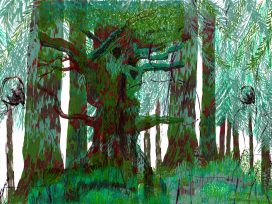
On the border between Poland and Belarus, the Forest has become the subject of a humanitarian crisis. An artist’s report, based on meetings with activists and refugees, charts this contested space. Poetry honours those lost in transit.
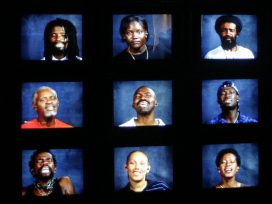
The white saviour, driven by a moral mission, benefits from the oppression they claim to resist. Reactions to the plight of ‘victims’ often fail to translate into concrete actions, leaving those in need of care begging for sympathy. Could acknowledgement of individual complexity to the point of mystery alter this dynamic?
